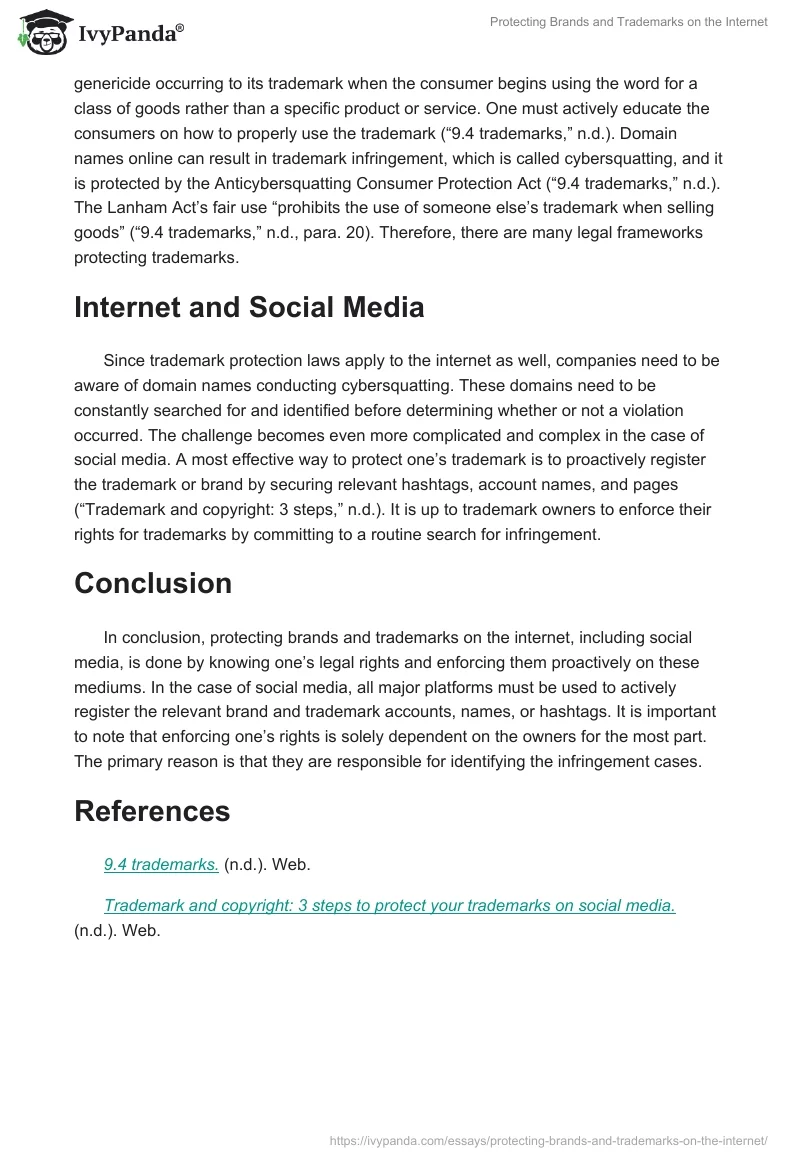Introduction
It is important to note that protecting trademarks and brands on the internet, especially on social media, is of paramount criticality not allow anyone to infringe one’s intellectual property. Both brand and trademark are designed to identify and be associated with a specific product or service. Therefore, a company is obliged to protect such a unique aspect of their business, which can be used by other parties to promote their interests. The necessary measures include registering the brand or trademark, proactively securing accounts on all essential platforms with relevant hashtags, and actively enforcing and protecting these elements through legal framework as well as regular monitoring.
Trademark and Brand
In order to ensure an in-depth discussion on the protection efforts in regards to trademarks and brands, it is vital to define them beforehand. A brand is an identity of a particular product and service, whereas a trademark is “any kind of name, logo, motto, device, sound, color, or look that identifies the origin of a particular good or service” (“9.4 trademarks,” n.d., para. 2). There is a wide range of various trademarks, such as collective marks, certification marks, service marks, trade dress, or phrases (“9.4 trademarks,” n.d.). It should be noted that a trademark is permanent with no expiration date, and it can be anything unique, such as color, words, or design.
Existing Legal Frameworks of Protection
One should be aware that there is a federal law and corresponding agency which are responsible for registering and protecting trademarks. The Lanham Act is designed “to prevent consumer confusion, the public good is best served by allowing companies to maintain their trademarks as long as consumers associate a trademark with a specific origin” (“9.4 trademarks,” n.d., para. 4). A company must be cautious of genericide occurring to its trademark when the consumer begins using the word for a class of goods rather than a specific product or service. One must actively educate the consumers on how to properly use the trademark (“9.4 trademarks,” n.d.). Domain names online can result in trademark infringement, which is called cybersquatting, and it is protected by the Anticybersquatting Consumer Protection Act (“9.4 trademarks,” n.d.). The Lanham Act’s fair use “prohibits the use of someone else’s trademark when selling goods” (“9.4 trademarks,” n.d., para. 20). Therefore, there are many legal frameworks protecting trademarks.
Internet and Social Media
Since trademark protection laws apply to the internet as well, companies need to be aware of domain names conducting cybersquatting. These domains need to be constantly searched for and identified before determining whether or not a violation occurred. The challenge becomes even more complicated and complex in the case of social media. A most effective way to protect one’s trademark is to proactively register the trademark or brand by securing relevant hashtags, account names, and pages (“Trademark and copyright: 3 steps,” n.d.). It is up to trademark owners to enforce their rights for trademarks by committing to a routine search for infringement.
Conclusion
In conclusion, protecting brands and trademarks on the internet, including social media, is done by knowing one’s legal rights and enforcing them proactively on these mediums. In the case of social media, all major platforms must be used to actively register the relevant brand and trademark accounts, names, or hashtags. It is important to note that enforcing one’s rights is solely dependent on the owners for the most part. The primary reason is that they are responsible for identifying the infringement cases.
References
9.4 trademarks.(n.d.). Web.
Trademark and copyright: 3 steps to protect your trademarks on social media. (n.d.). Web.


